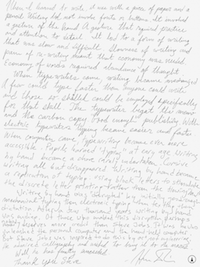Since writing Peak Cable six months ago, surveys, research and analysis have contributed to the themes of unbundling the TV package. The data under scrutiny is, as usual, the data that can be gathered. Unfortunately the data that can’t be gathered is where the insight into what is happening may lie. For instance, what matters for an entertainer is not how much you’re watched but how much you’re loved. Measuring love is done poorly with data on payment for subscriptions.
A better proxy might be time. Liam Boluk makes the point in his post that “focusing on cord cutting or even cord shaving largely misses the point.” Don’t follow the dollars, he says, follow the time or engagement. “Relevance” is what matters.
His data shows how linear TV has fallen by roughly 30% among the young (12-34) in the last five years. The trouble for the TV bundle (and advertisers) is that this is the most culturally influential group. They are also the group which will grow into the highest income group over the next decade. And this group does not love TV.
We have to remember that it was the youth who drove early radio, TV and consumer electronics markets. Those young are now the old which still cling to the old media, served by companies that grew old with them. They are the “high-end” customers with which Nielsen itself has grown. They have the most money to spend and they are the targets for the ads
Paying $150/month to watch incontinence and erectile dysfunction ads—at a time not of your choosing—is preposterous for the young. They may like the programs but not the way they are packaged, delivered or interrupted. They are not smarter than their parents. They, like their parents, took to new technology more quickly. What makes the technology new is also what lets its makers separate the content from its delivery. These new technologies allow “modularizing” or unbundling that which was was integrated/bundled and thus allow their developers to focus on the customer’s real jobs-to-be-done.
Unsurprisingly, incumbents have responded by throttling access to original programming–an asset over which they still exert influence as distributors. Netflix and Amazon are taking the path of responding with their own blockbuster productions. Although Silicon Valley has more capital to deploy than Hollywood this battle of attrition is by no means one that incumbents will win, and generally, it’s not going to be pretty.
Tweaking the nose of the incumbent might not be the way to establish asymmetry. The better tactic may be to help the system survive but offer a “short-term alternative”. This is how iTunes took on and won Music. When Napster and file sharing created a clear and present danger to the industry, Apple’s approach of a controlled alternative allowed the industry to finally move to a digital download model.
Continue reading “Why does Apple TV deserve to exist?”

